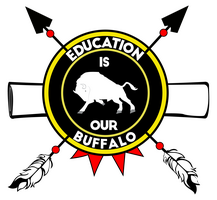Before the first European settlers came to this land, there lived on the coast of Massachusetts a giant named Moshup. Moshup lived among the Wampanoag Indians both on Cape Cod and Martha's Vineyard. Now there are many tales and variations to this story about Moshup, but the one that we like the best goes something like this.
Moshup, an Indian giant who once lived on the mainland of Massachusetts, decided one day to settle down on the beautiful island of Martha's Vineyard.
Moshup loved to sit on the top of a hill on the Vineyard near a town now called Gay Head. There is still evidence of his grand seat there in the crater above the cliffs.
Moshup loved whale meat, which he would catch with his hands, then cook over a fire he made by ripping the trees that surrounded him out of the ground. He did so much of this that there are barely any trees left today in the town of Gay Head.
To catch the whales, Moshup threw stones into the water to step on, and that is how the rocks between Cuttyhunk and the mainland called the Devil's bridge came to be.
Moshup also loved the Indians who lived nearby him, and he would share his whale meat with them. He fed them so well that one year they gathered all of the tobacco they had harvested and gave it to Moshup to show their appreciation.
In his great pipe, Moshup smoked the tobacco, which was barely enough for a man his size, then he emptied the ashes into the water, and that is how the island of Nantucket came to be.
One day Moshup told the Indians that a new breed of man, with fairer skin than they would soon be coming to their land. He warned the Indians not to let them on their shore, for if they did, the Indians would live no more.
Then Moshup quietly slipped away into the choppy waters off the bay. Soon after, the pale faced men came ashore, and landed near the place where Moshup once lay. The Indians greeted them with friendship and let them stay, and Moshup has not been seen since that day.
by Deborah Champlain
Go Back To: Wampanoag Nation
